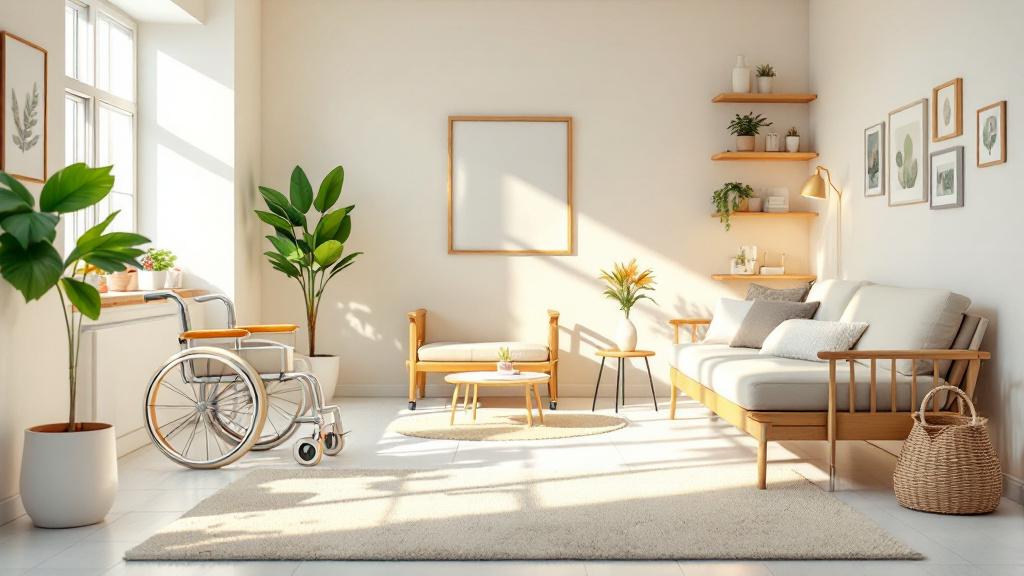Unlocking Daily Living Skills with Targeted Activities
Occupational therapy (OT) plays an essential role in helping individuals of all ages develop, recover, or maintain the skills necessary for independent living. From children learning fundamental self-care routines to seniors striving to maintain mobility and safety, OT employs a variety of tailored activities that foster functional abilities, improve confidence, and enhance quality of life. This article explores the diverse activities, assessment methods, tools, and strategies used in occupational therapy to support individuals in everyday activities, emphasizing their importance across different populations and environments.
Understanding Daily Living Skills and Their Significance

What are the activities of daily living (ADLs) and instrumental activities of daily living (IADLs)?
Activities of Daily Living (ADLs) refer to the fundamental tasks that individuals perform every day to take care of themselves. These include essential activities such as bathing, dressing, grooming, toileting, managing continence, eating, and moving around independently. They are vital for maintaining personal health and safety. In addition to these, there are instrumental activities of daily living (IADLs) that support an independent lifestyle. These include more complex tasks like managing finances, preparing meals, doing household chores, managing transportation, communicating, and handling medications. Healthcare professionals regularly evaluate both ADLs and IADLs to understand an individual’s level of independence and to develop appropriate support or intervention strategies. Tools like the Katz Index of Independence in ADL and the Lawton Instrumental ADL Scale are common assessments used to measure performance in these areas. Declines in ADL and IADL performance may emerge due to aging, illness, injury, or chronic health conditions. Such declines can significantly impact a person’s ability to remain independent, potentially leading to increased need for assistance or care. Overall, ADLs and IADLs serve as essential frameworks in health and rehabilitation settings, guiding care planning, recovery strategies, and support services to enhance quality of life.
How can occupational therapy improve a person's ability to perform daily living activities?
Occupational therapy plays a crucial role in helping individuals regain or maintain independence in daily activities. Therapists carefully assess each person’s unique needs, strengths, and challenges to design personalized intervention programs. They incorporate practical exercises aimed at developing strength, improving balance, increasing endurance, and enhancing range of motion. These exercises can be combined with functional activities that mimic real-life tasks like self-feeding, dressing, or household chores. A common approach in occupational therapy involves task-specific training, where clients practice real-world activities with or without adaptive tools. For example, using adaptive utensils or dressing aids can facilitate independence in feeding or dressing. Therapists may also recommend environmental modifications, such as installing grab bars or creating organized routines, to support safety and ease of activity performance. Additionally, therapies like aquatic exercises and movement training help reduce fall risks and improve mobility. Through consistent practice, adaptive techniques, and education, occupational therapy helps people perform daily tasks more efficiently. The result is increased confidence, greater autonomy, and an overall improvement in quality of life.
More Information:
For comprehensive insights into occupational therapy techniques, assessment tools, and strategic interventions for enabling independence in daily activities, searching for terms like "Occupational therapy ADL assessment and intervention techniques, tools, and strategies" can provide valuable resources.
Implementing Occupational Therapy Activities at Home

What are some practical strategies for implementing occupational therapy activities at home?
For families and caregivers, incorporating occupational therapy exercises into daily routines can be both effective and enjoyable. Starting with simple, purposeful tasks, such as baking cookies, drawing, or playing with modeling clay like Play-Doh, promotes fine motor skills and sensory development. These activities help strengthen hand muscles, improve coordination, and provide sensory input necessary for processing stimuli.
Movement-based activities are also valuable. Creating obstacle courses using household furniture, practicing swinging or jumping, and engaging in balance exercises support gross motor development and body awareness. These tasks not only promote physical strength but also foster confidence.
Sensory activities—such as tactile play in sensory bins filled with beans or rice, heavy work tasks like carrying groceries or pushing a weighted cart, and water play—assist children in regulating their sensory systems. Using common household objects, like opening jars or threading beads, can enhance bilateral coordination and hand-eye coordination.
Connecting with an occupational therapist can help customize these activities. They offer tailored strategies based on the child’s specific needs, providing valuable guidance on selecting appropriate exercises and routines suitable for the home environment. Consulting professionals ensures activities are safe, effective, and aligned with developmental goals.
What activities can foster independence in daily routines at home?
Fostering independence starts with practicing basic self-care tasks. Transferring from bed to chair or toilet, setting up meals, dressing, and grooming are fundamental activities that can be improved with regular practice.
Using adaptive tools can significantly ease these routines. For example, built-up utensils make eating easier for children and seniors with limited grasp strength. Non-slip mats and easy-fastening clothing help prevent falls and simplify dressing.
Implementing routine charts and visual schedules supports consistency and predictability, which is especially beneficial for children or adults with cognitive challenges. These visual aids help clarify steps for tasks like brushing teeth, showering, or making snacks, reducing frustration and encouraging independence.
Involving individuals in household chores—such as folding laundry, setting the table, or watering plants—stimulates skill development and fosters a sense of accomplishment. Tailoring activities to individual abilities and continuously consulting with therapy professionals can reinforce skills, promote confidence, and ensure safety.
By integrating these strategies into daily life, families can support ongoing growth in independence, making everyday routines less tiring and more manageable.
Support tools, routines, and caregiver involvement
Adaptive equipment plays a crucial role in promoting successful participation in daily activities. Items like built-up handles, easy-to-open containers, and visual cues help reduce physical and cognitive barriers.
Establishing consistent routines with visual supports enables individuals to anticipate and prepare for daily tasks. Routine charts, timers, and scheduled checklists help structure the day, making activities more predictable.
Caregivers and family members are integral to the success of home-based occupational therapy. Their involvement in guiding, encouraging, and practicing activities encourages skill retention and generalization.
Regular consultation with occupational therapists ensures that activities remain appropriate and progressive. Therapists can suggest modifications, introduce new strategies, and provide education to caregivers about maintaining progress.
Together, these approaches create a supportive environment conducive to developing independence and enhancing quality of life for individuals across all ages.
Tools and Equipment Supporting Daily Living Skills

What tools and equipment are used in occupational therapy to enhance daily living skills?
In occupational therapy, a wide range of tools and equipment is employed to promote independence and improve functional abilities in daily activities. Traditional adaptive devices remain fundamental, such as reachers, dressing sticks, and hygiene aids that assist individuals in performing tasks with greater ease. These are especially useful for those with limited mobility, joint issues, or muscle weakness.
Beyond these basics, modern technological innovations have expanded the options available. Smartphone applications and dedicated computer software can guide users through routines, provide reminders, and track progress over time. Virtual reality programs create immersive environments where individuals can repeatedly practice real-life situations safely, building confidence and skills.
Assistive technology also includes advanced devices like brain-computer interfaces that help translate neural signals into commands for controlling devices, supporting individuals with severe disabilities.
Environmental modifications are a vital aspect of enhancing daily living. Installing grab bars in bathrooms, using modified furniture, and incorporating support aids like large-handled utensils or weighted cutlery can markedly improve safety and ease of use. These adaptations help reduce falls, improve posture, and promote independence.
High-tech options are increasingly integrated into therapy plans. Robotic systems assist with movement training and repetitive exercises, while wearable health monitors provide real-time data on activity levels and physiological responses. AI-powered platforms enable remote assessments and personalized therapy programs, making therapy more accessible and tailored.
The tools selected are personalized based on the individual’s age, condition, and specific needs. For example, children might benefit from adaptive toys and gamified training modules, while older adults may use standing frames, safety alarms, or voice-activated home systems. By combining traditional devices with innovative technology and environmental changes, occupational therapy aims to optimize physical, cognitive, and emotional participation in daily activities.
How does modern technology influence occupational therapy practices?
Modern technology has revolutionized occupational therapy, offering more effective, accessible, and customizable interventions. Smartphone apps and computer-based programs facilitate skill development, track progress, and support caregivers by providing educational resources and reminders. These digital tools are easily integrated into everyday routines, making therapy more natural and continuous.
Virtual reality (VR) environments simulate real-world tasks in a controlled, safe setting. Patients can practice activities like cooking, shopping, or using public transportation repeatedly, leading to better transfer of skills to everyday life. VR also enhances motivation and engagement during therapy sessions.
Wearable devices such as motion sensors and physiological monitors enable therapists to gather detailed data on movement patterns and physical responses. This real-time feedback allows for dynamic adjustments in therapy, ensuring the most effective approach.
Smart home systems represent another significant technological advance. Automated lighting, voice-controlled appliances, and safety alerts enable users, especially those with mobility or cognitive challenges, to perform household tasks independently and safely.
AI-powered platforms and telehealth services expand therapy accessibility. Patients can receive expert guidance remotely, participate in virtual assessments, and access customized training programs on demand. These innovations open new avenues for continuous support, especially in rural or underserved areas.
Overall, technology enhances the precision, effectiveness, and reach of occupational therapy. It empowers individuals to achieve optimal independence and quality of life through innovative solutions tailored to their unique circumstances.
Supporting Diverse Populations Through Occupational Therapy

How does occupational therapy support different populations, such as seniors and children, in developing daily living skills?
Occupational therapy (OT) plays a vital role in helping a wide range of individuals, from children to seniors, improve their ability to perform daily activities independently. For children, OT focuses on activities that develop foundational skills such as fine motor control, sensory processing, and coordination. These may include building with LEGO, drawing, playing sensory games, or engaging in tasks that promote developmental milestones. Such activities not only improve physical skills but also foster self-regulation, problem-solving, and social interaction.
For seniors, OT emphasizes maintaining strength, balance, and safety in everyday routines. Activities often involve simple yet effective tasks like playing bingo, doing crafts, or practicing hobbies that encourage cognitive engagement and fine motor skills. Workspace adaptations, such as grip-enhanced utensils or grab bars, are commonly recommended to promote safety and independence at home.
In both groups, occupational therapists tailor activities and modify environments to match individual needs and goals. They focus on creating meaningful and developmentally appropriate exercises that motivate participation and support community involvement. This personalized approach ensures that each person can maximize their independence and quality of life.
Tailored Activities and Modifications
Customized activities based on personal abilities and interests are central to effective OT practice. For example, children with coordination difficulties might engage in using adaptive tools like built-up handles for self-feeding or dressing, while seniors might use ergonomic devices to facilitate easier meal preparation or personal hygiene.
Therapists also adjust routines and environments, such as installing grab bars in bathrooms for safe mobility or providing visual cues for daily routines. Task simplification and the use of assistive technology help make activities more accessible and less tiring.
Environmental and Assistive Adaptations
Creating a supportive environment is crucial. In homes and community spaces, modifications such as wider doorways, non-slip mats, or labeled storage can significantly enhance safety and independence.
Assistive devices like sensory bins, textured utensils, or adaptive seating systems are employed to improve functionality. These modifications are designed to accommodate physical limitations, sensory sensitivities, or cognitive challenges.
Holistic Approach and Community Participation
Occupational therapy adopts a comprehensive perspective by considering physical, cognitive, emotional, and social aspects. Encouraging participation in community activities—such as clubs, volunteer work, or social outings—helps reinforce the skills learned through therapy.
Support for social interaction, communication, and community engagement fosters a sense of belonging and self-confidence. OT aims not only at improving individual function but also at promoting active inclusion in society.
Summarizing Support for Different Populations
| Population | Focus Areas | Typical Activities | Modifications & Tools | Goals |
|---|---|---|---|---|
| Children | Motor skills, sensory processing, developmental milestones | Play, drawing, sensory games | Adaptive utensils, visual cues, sensory equipment | Independence, development, social skills |
| Seniors | Strength, balance, safety, cognitive engagement | Crafts, games, functional tasks | Grab bars, textured grips, ergonomic tools | Safety, fall prevention, autonomy |
| All Ages | Functional life skills, community integration | Daily routines, adaptive strategies | Home modifications, assistive tech | Participation, quality of life |
Overall, occupational therapy is a versatile field that adapts to the diverse needs of individuals across the lifespan. By promoting development, independence, and community involvement, OT significantly enhances the ability to participate in meaningful daily activities.
Enhancing Quality of Life through Occupational Therapy
Occupational therapy is a vital and versatile field dedicated to empowering individuals by improving their ability to perform daily activities confidently and safely. Through a comprehensive approach that includes assessment, personalized activities, adaptive tools, and environmental modifications, OT supports a wide range of populations, from children developing foundational skills to seniors maintaining independence. The integration of innovative technology, caregiver education, and home-based strategies further extends the reach and effectiveness of therapy. Ultimately, occupational therapy not only fosters independence but also enhances overall well-being, social participation, and quality of life, making it an indispensable component of holistic healthcare.
References
- OT Activities for Adults: Enhancing Daily Living Skills
- Activities of Daily Living - StatPearls - NCBI Bookshelf
- Occupational Therapy For Activities Of Daily Living - Sagewood
- Chapter 12: Activities of Daily Living and Fine Motor Abilities
- The Role of Occupational Therapy in Enhancing Daily Living Skills
- Top At Home Occupational Therapy Activities - The Note Ninjas
- 10 Occupational Therapy At-Home Activities | Lurie Children's
- Strategies to Improve Daily Living - National Jewish Health











